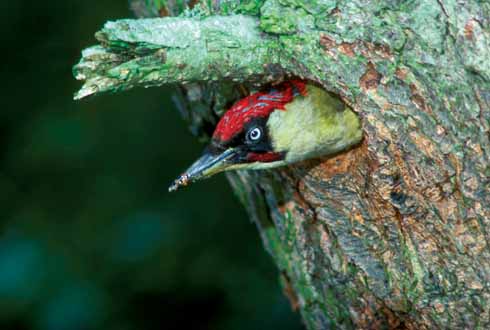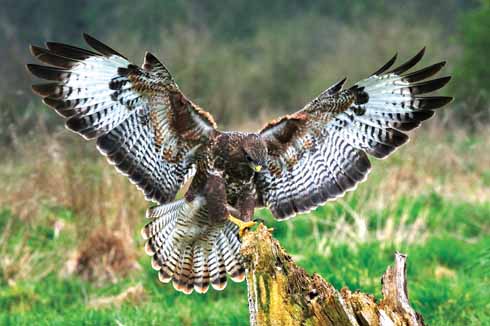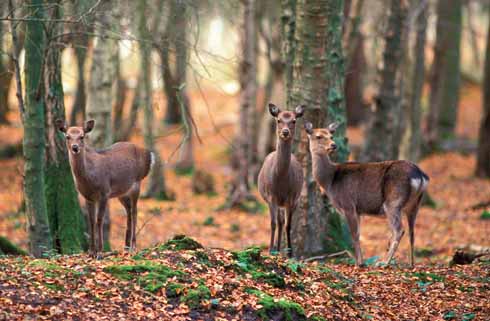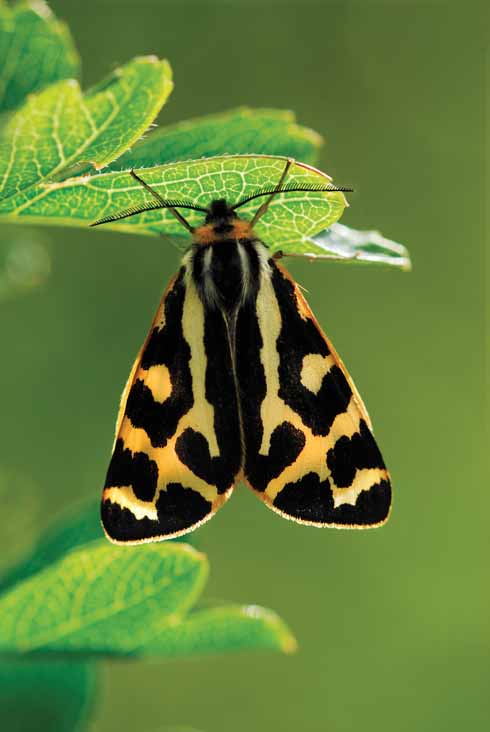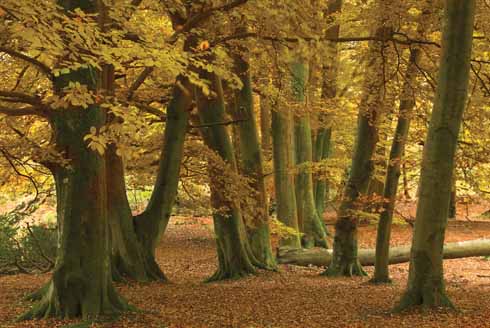Dorset’s wild woodlands
In the penultimate part of his series on Dorset's habitats, Colin Varndell takes us deep into the woods
Published in November ’12
Dorset’s wild woodlands started to appear after the last ice age receded approximately 10-12,000 years ago. The tundra first became afforested by trees with light, wind-blown seeds such as silver birch, aspen and sallow. Later, these birchwoods were colonised by species such as lime, oak and Scots pine as the heavier seeds of these trees were carried into the woodlands by birds.
These forests proved to be rich in resources for early man, who hunted the wildlife for food, gathered the fruits and nuts and used the timber for fuel and for building. The clearing of natural woodland began in earnest during the Bronze Age and continued up until the last century. Indeed, recent generations have been responsible for decimating our woodlands on a massive scale. For instance, during the second half of last century more than 50% of the remaining primeval woodland in Britain was felled.
Thankfully today we are aware of the importance of our native trees and woodlands and the wildlife they support.

Sweet chestnuts do not stay on the ground for very long; they are highly prized by squirrels and mice
I have often wandered into the depths of the Powerstock Common oakwood. Here, the woodland is as near to pure and natural as anywhere else in Dorset. The ancient oaks and hawthorns stand gnarled and twisted, damp ribbons of wet ground support thick accumulations of pendulous sedge. The tree trunks and branches are draped with lush mosses and lichens, and in autumn, much of the deadwood (and some of the live) is festooned with weird and wonderful fungi. This ancient woodland site is animated with the sounds of animals and birds. Mewing cries of buzzards echo thorough the trees and the rapid drumming of woodpeckers is heard in spring. The gutteral barking grunts of fallow bucks during the autumn rutting season are heard in the depths of the wood. This would have been how most of Dorset looked before we humans took over.
Many of the remaining woodland sites are unsuitable for agricultural purposes as they occur on poorly drained heavy clay soils or on steep slopes, but all are rich wildlife habitats. Hardwood plantations, such as Hooke Park and Blandford Forest, provide essential habitats for much wildlife. Even the sprawling conifer forests of Wareham and Puddletown are teeming with wildlife, especially during summer.
It is in the rides, tracks, clearings and more importantly the woodland edge habitat where wildlife thrives the most, as here sunlight meets shade, encouraging the growth of shrubs and flowers. A perfect habitat for insects in summer and birds and mammals in autumn feasting on the seeds, nuts and berries.

The scorpion fly is a voracious predator of small insects and can be abundant in woodland edge habitats
The majority of woodland flowers bloom in early spring before the leaf canopy of the trees fills in. Their very need to pollinate before the habitat is plunged into dark shade has resulted in bright colours and short flowering seasons. The most common spring wild flowers associated with woodlands are bluebells, ramsons (sometimes referred to as wild garlic) and red campion. The wood anemone is indicative of well-established woodland sites. But the most reliable indicator of ancient, primeval woodland is the rather strange looking herb paris. Some other notable flowers found in some of Dorset’s woodlands which indicate continuity of old woodland sites include birdsnest orchid, toothwort and meadow saffron.

The weeping polypore inontus dryadeus most often found at the base of oak trees. This one was photographed on Powerstock Common.
Fungi are an important feature of our woods and are most abundant during warm, damp conditions in autumn, although they may be encountered at any time of year. The fly agaric, which is often used to illustrate children’s fairy tale books, is especially abundant in east Dorset where it thrives on the dead roots of silver birch trees.
Dorset’s woodlands support a wide range of wild mammals including fox, badger, grey squirrel, mice, voles and large numbers of wild deer. In the Marshwood Vale, the woods and copses are home to roe deer. These small, native deer lie up in cover during daytime, coming out to graze in the fields at dusk.
The woods and copses in an area between Beaminster, Toller and Powerstock, support a herd of Old English fallow, the direct descendants of animals thought to have been introduced to Britain in Norman times. Sadly, this pure strain of ancient fallow is now threatened by park deer, which have escaped locally in recent times.
The biggest deer success story is that of the sika which were first introduced into Dorset on Brownsea Island. Sika now occur in large numbers in the woods and copses of east Dorset.
Woodland birds are well represented in Dorset’s woods with many of the usual suspects including both green and great spotted woodpecker, nuthatch, treecreeper, and a variety of tits and finches.
The noisy jay gives away its presence with a loud, raucous screech. This colourful member of the crow family habitually collects acorns in the autumn to bury them for future food resources. It is possible jays were responsible for bringing oaks into England as they moved into the birch woods.

The treecreeper is typically found in broad-leaved woodland. It gets its name from its habit of creeping up tree trunks searching for invertebrates with its fine, curved bill.
The sparrowhawk sits at the top of the avian foodchain, evolution having given it the task of fine-tuning the wellbeing of its prey species. The sparrowhawk consistently catches the weak,
diseased, older birds thus ensuring that the genes of fit, fast healthy individuals are passed on to future generations.
At the end of the day, as darkness creeps into Dorset’s woodlands, nocturnal wildlife emerges. The haunting call of the tawny owl can be heard just about anywhere in the county, especially in and around woodland. This nocturnal hunter feeds on a diet made up almost entirely of woodmice and voles.

The woodmouse is strictly nocturnal, and is probably the most common mammal to be found in Dorset’s woods
Woodland is especially rich in invertebrates which are evident throughout the summer and autumn. The first woodland butterflies to appear in spring are the holly blue and brimstone. Later, in damp woodland rides and clearings, lady’s smock flowers attract the beautiful orange-tip butterfly. These are some of the most obvious woodland invertebrates to spot, but there are almost countless insects associated with trees and woods in this county. During the summer months numbers of woodland invertebrates build up to peak in September. The wasp family is well represented in woodland habitats. The largest member of this family, the hornet, typically nests in tree hollows in woodland. Dragonflies, especially southern hawker, hunt along rides and woodland edges in late summer. One of the most fascinating woodland insects to watch is the ichneumon fly – rhyssa persuasoria, which lays its egg into the grub of a wood wasp buried deep in a tree. It can push its ovipositer up to 40mm deep into the wood to lay its egg.
Woodland and the trees therein are vital to all forms of life. Trees store carbon dioxide as well as supporting a vast array of wildlife. Dorset is by no means the most wooded county in England, but with our greater understanding of broad-leaved woodland, it is hoped that these habitats will be increased and protected in future for the benefits to wildlife, ourselves and the planet as a whole.
